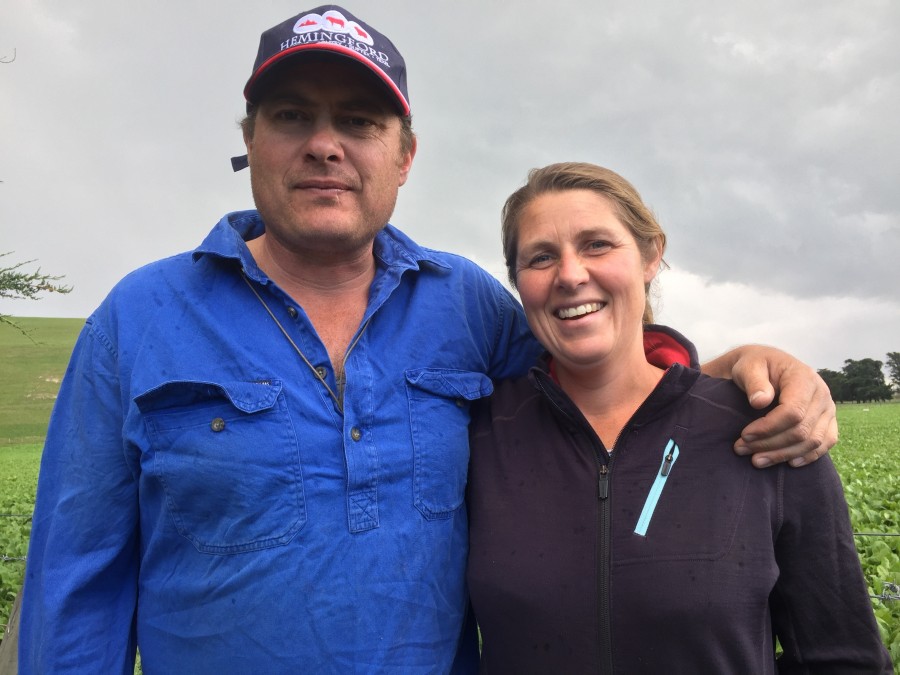
“Taking part in trials for the Hill Country Futures Partnership Programme has already been really valuable for us,” says Matt Iremonger, general manager of Willesden Farm on the Banks Peninsula.
“We have had some early results from the experiments on the development we have done on our hills and total dry matter and it was very interesting. We took that data to our bank when we applied for additional funding to undertake further capital improvements – which are now underway.”
The Hill Country Futures Partnership programme is a five-year programme co-funded by Beef + Lamb New Zealand, the Ministry of Business, Innovation and Employment, PGG Wrightson Seeds and Seed Force New Zealand.
The $8.1m programme is focused on future proofing the profitability, sustainability and wellbeing of New Zealand’s hill country farmers, their farm systems, the environment and rural communities. It differs from most pastoral-based research, in that it considers the whole-farm system and, critically, the wider communities these systems exist within.
It incorporates traditional science research, farmer knowledge, social research and citizen science and has a strong emphasis on forages and providing decision-making tools to help farmers select the best forage option for different land management units.
Willesden Farm is a 5,500 Ha sheep and beef property. About 1,200 Ha is flat and cultivatable while the remainder is mostly moderate to steep hill country. Rainfall and altitude can vary significantly within a short distance on this property. Annual rainfall ranges from 550 to 1,100 mm while altitude goes from sea level to above 850m above sea level.
Two projects within the Hill Country Future Partnership programme are underway on the farm. One, led by Lincoln University’s Professor Derrick Moot, is undertaking measurements of pasture growth at two locations, one an improved area with lucerne and the other an unimproved pasture of mainly weed grasses with a little ryegrass and white clover.
The other, led by Dr Nathan Odgers, of Manaaki Whenua Landcare Research, is mapping micro-indicators, such as soil temperature and moisture, in the hill country landscapes. The goal is to help farmers quantify key soil and terrain features to enable robust decision-making around the most suitable locations and potential benefits of introducing forage legumes.
“Derrick Moot asked if we would like to be involved,” says Matt. “He had done previous trials on the property and given us advice around some of the legume work we have done in the past.
“I think the challenges for hill country farmers are the same as they are for farmers whatever the land type in that there is an increasing focus on more efficient use of the resources we have and the need to use all inputs, fertiliser, chemicals and feed more efficiently.
“However, it is not easy for hill country farmers to show how efficient we are because of the topography and difficulty of measuring. That is where the challenge is and I see that as one of the major opportunities of the Hill Country Futures programme.
“It will show the opportunities we have to actually evolve science around this and the more we have science and advice from experts, the better informed we will be in the decisions we make.”
The pasture measurements at Willesden Farm are being taken at two altitudes 20 or 175 metres above sea level. At each altitude, there are paired enclosure cages on improved and unimproved pasture. The cages are monitored by field technician Malcolm Smith from Lincoln’s Dryland Pasture team.
Harvests were taken in May, September and December 2019 and January 2020. Over this period, the improved lucerne pasture had accumulated 14 tDM/Ha – more than twice the 5.4 tDM/ha for the unimproved pasture.
“Data from the trial was critical in enabling us to make our case to the bank,” says Matt. “It is all very well to say you can do something, but being able to prove that from a scientific point of view is far more powerful, because science is irrefutable. Having the trials on farm has created no issues – we just provide access and the technician comes on and does the measuring.”
Matt says he is extremely positive about the future of hill country farming.
“As technology increases, there will be more resources available to use to improve our performance and the outcomes of this work will be among them.
“As techniques of capturing data and information become more readily available, that will help to develop skill sets and information and data sets and support the ability to measure ourselves around best practice and returns on investment.
“Having this work underway on the farm has been interesting, a pleasure and exceptional value for us and it will continue to be valuable to us in any of our projects.”